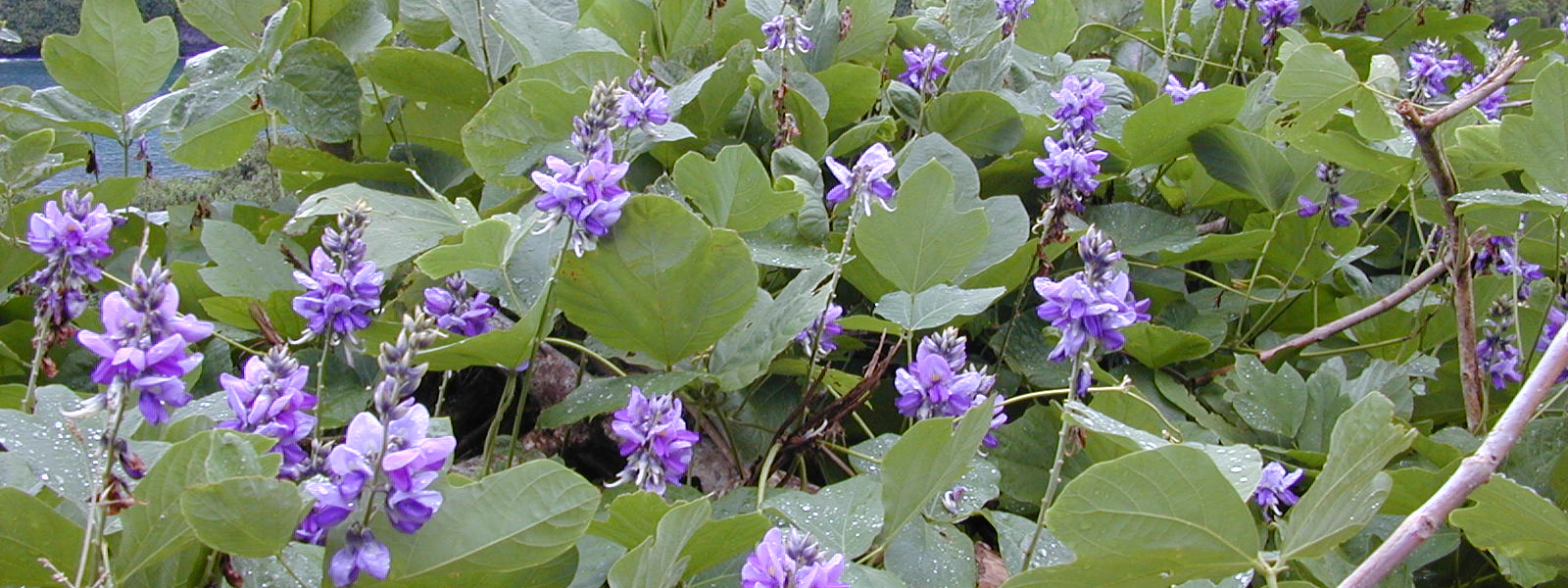
Common Name
Kudzu vine, Japanese Arrowroot, Mile-a-Minute Vine, or simply Kudzu
Scientific Name
Pueraria montana var. lobata
Family
Fabaceae
Lifecycle
Perennial
Seasons of Growth
Year-round
Key Distinguishing Feature
Vigorous vine with trifoliate leaves, often covering other vegetation
• Growth Form: Kudzu is a fast-growing, twining, and trailing vine that can smother other vegetation. It can cover large areas quickly.
• Leaves: The leaves are compound, consisting of three broad leaflets with a distinctive shape. They are typically green and can be quite large.
• Flowers: Kudzu produces clusters of reddish-purple, pea-like flowers in late summer.
• Roots: Kudzu has a deep, tuberous root system that stores energy and allows it to resprout vigorously.
• Habitat: Kudzu is commonly found in a variety of habitats, including forests, fields, roadsides, and disturbed areas. It is native to East Asia but has become invasive in other regions, including North America.
Ecological Impact:
• Kudzu is a most invasive plant species , forming dense mats that smother native vegetation, alter ecosystems, and increase the risk of erosion.
• It is known for its rapid growth rate, making it difficult to control once established.
Control Methods:
• Control of Kudzu is challenging due to its aggressive growth and extensive root system.
• Mechanical methods, such as mowing, cutting, or grazing with goats (which can consume the plant), can be used to reduce its biomass.
• Herbicides may be used for control, but they often require multiple applications over several years.
• Preventing the establishment and spread of Kudzu through early detection and rapid removal is crucial.
Kudzu is a highly invasive vine that requires sustained and coordinated control efforts to manage its spread and protect native ecosystems. Local agricultural and environmental agencies often provide guidance on control strategies for this invasive species.




